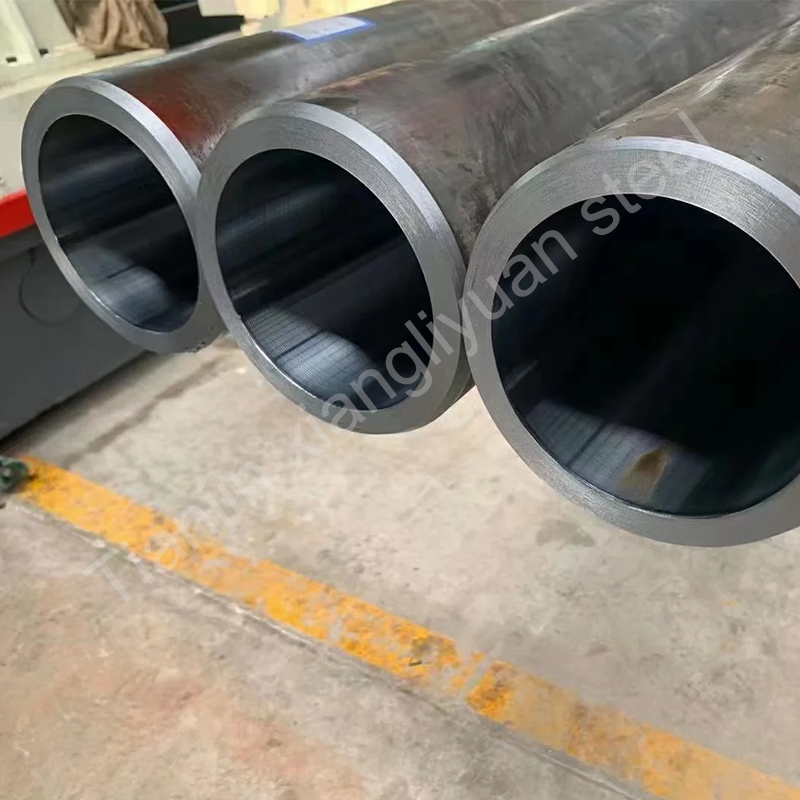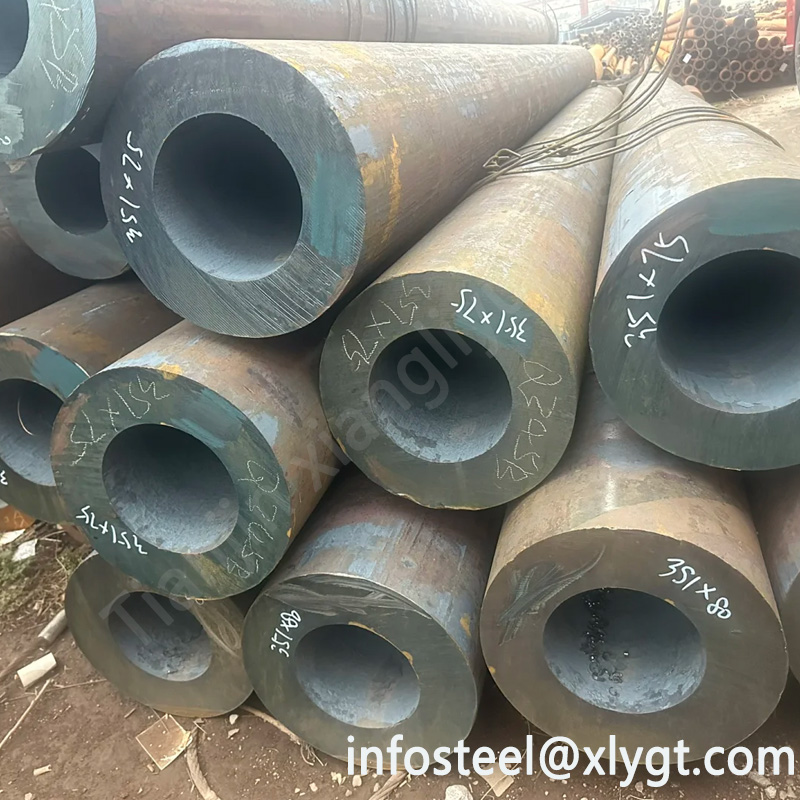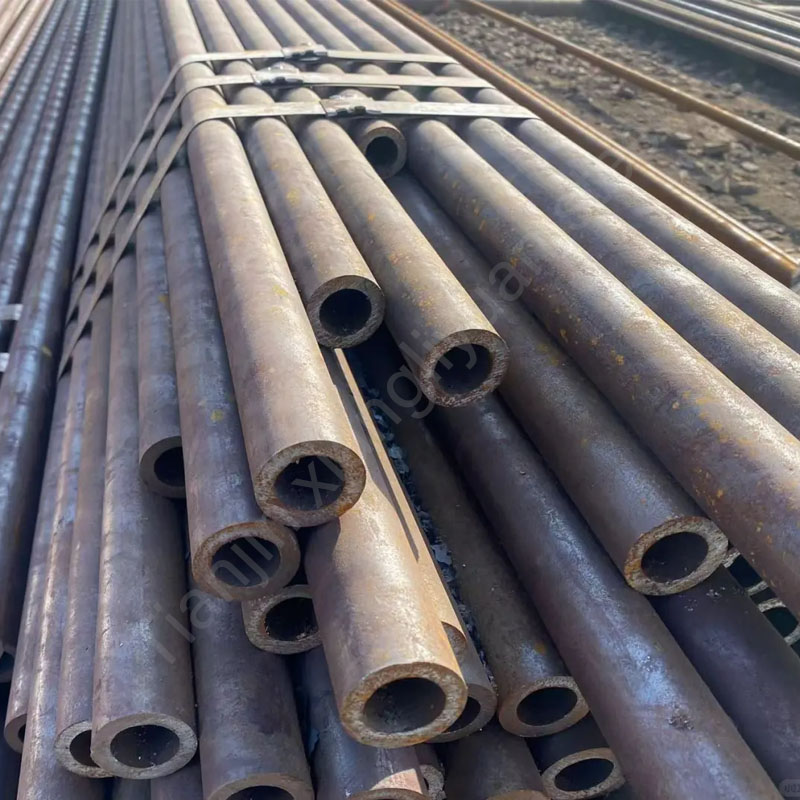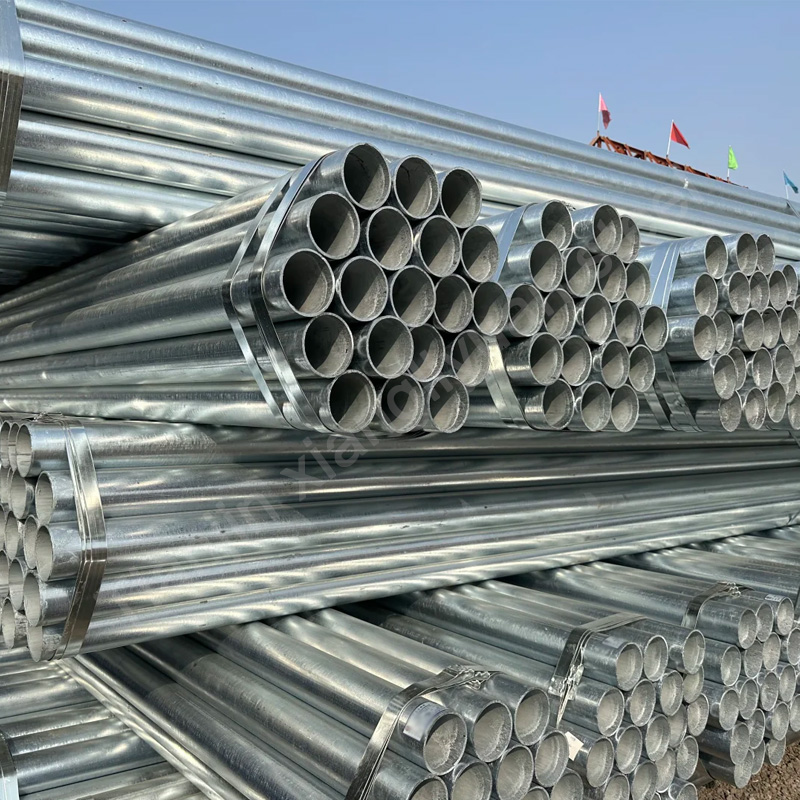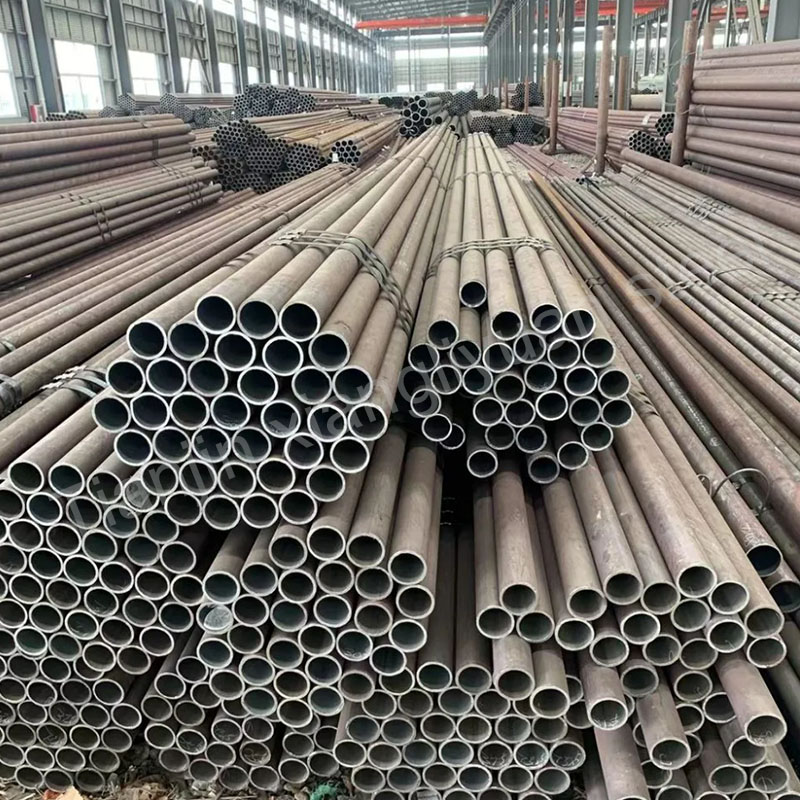Alloy steel pipe is a high-performance pipe made of carbon steel by adding alloy elements such as chromium, molybdenum, nickel, and vanadium. Its excellent strength, high temperature resistance, corrosion resistance, and creep resistance make it occupy an important position in the fields of energy, chemical industry, and machinery manufacturing. The following is a comprehensive analysis of alloy steel pipes from the dimensions of material, standard, specification, and use.
1. Common materials and steel grades of alloy steel pipes
The addition of alloy elements gives steel pipes differentiated properties. Common material classifications are as follows:
1. Chromium-molybdenum steel (Cr-Mo series)
– Typical steel grades: 15CrMo (GB), A335 P11/P22 (ASTM), 13CrMo4-5 (DIN)
– Features: outstanding high temperature strength, strong resistance to hydrogen corrosion, suitable for boiler pipes and oil refining equipment
2. Chromium-molybdenum-vanadium steel (Cr-Mo-V series)
– Typical steel grades: 12Cr1MoV (GB), A335 P91/P92 (ASTM)
– Features: Vanadium element refines grains, improves creep resistance above 600°C, and is mostly used in supercritical power station pipelines.
3. Nickel-chromium-molybdenum steel (Ni-Cr-Mo series)
– Typical steel grades: A335 P5/P9 (ASTM), 12Ni14 (JIS)
– Features: Excellent low-temperature toughness, acid and alkali corrosion resistance, suitable for liquefied natural gas (LNG) storage and transportation and chemical reaction equipment.
2. Mainstream standard system of alloy steel pipes
Specific standards and specifications for different application scenarios:
International standard: ASTM A335/A213 Petroleum cracking furnace tubes, power plant boiler tubes
Chinese standard: GB 5310/9948 High-pressure boiler tubes, geological drilling tubes
European standard: EN 10216-2 Seamless steel tubes for pressure vessels
Japanese standard: JIS G3458 Chromium-molybdenum steel tubes for high-temperature piping
3. Specifications and dimensions of alloy steel pipes
1. Outer diameter and wall thickness
– Outer diameter range: minimum 6mm (pipes for precision instruments) to maximum 1200mm (large transmission pipelines)
– Wall thickness classification: Sch40 (conventional pressure), Sch160 (ultra-high pressure), XXS (extra-thick wall)
– Typical specification examples:
– Small diameter pipe: Φ25×3mm (hydraulic system)
– Medium diameter pipe: Φ219×10mm (oil and gas gathering and transportation)
– Large diameter pipe: Φ508×20mm (main steam pipe of power station)
2. Length customization
– Fixed length: 6m/12m (standard length), special requirements can be customized for long pipes over 18m.
IV. Core application areas of alloy steel pipes
1. Energy and power
– Thermal power station: P91/P92 steel pipes are used for main steam pipes above 600℃, and thermal efficiency is increased by 15%.
– Nuclear power: SA-335 Gr.12 radiation-resistant pipes are used for reactor cooling systems.
2. Petrochemicals
– Refining unit: 15CrMo cracking furnace tubes withstand 650℃ high temperature oil and gas corrosion.
– LNG transportation: 9%Ni steel pipes maintain toughness at low temperatures of -196℃ and are used for storage tanks and transmission pipelines.
3. Machinery manufacturing
– Hydraulic props: 27SiMn steel pipes have a compressive strength of 800MPa and are used for hydraulic supports in coal mines.
– Automobile transmission shaft: 4140 alloy steel pipe lightweight design, fatigue life increased by 30%.
4. Special environment
– Offshore platform: Duplex stainless steel 2205 (S31803) is resistant to seawater corrosion and has a service life of more than 20 years.
V. Selection recommendations and industry trends
Selection requirements:
– Temperature matching: 15CrMo is preferred below 500℃, and P91 is selected above 600℃.
– Medium compatibility: Sulfur-resistant steel such as 09Cr2AlMoRE is required in sulfur-containing oil and gas environments.
Technology trends:
– Material upgrade: High chromium steel (such as P122) promotes power station efficiency to exceed 50%.
– Process optimization: Hot extrusion molding technology increases the yield of thick-walled pipes to more than 95%.
Alloy steel pipes continue to meet the high-end needs of industry through composition design and process innovation. From ultra-supercritical power generation to deep-sea oil and gas development, its performance boundaries are constantly breaking through, becoming an indispensable “blood vessel” for modern industry. In the future, with the development of new materials, alloy steel pipes will play a greater role in hydrogen energy storage and transportation, fourth-generation nuclear reactors and other fields.

